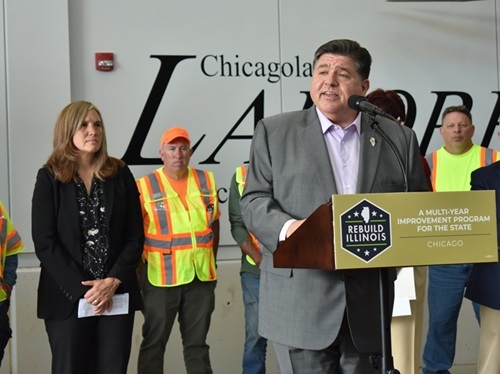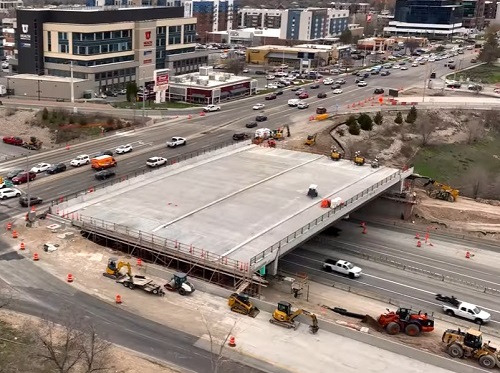The Utah Department of Transportation recently released a time-lapse video chronicling the demolition and replacement of the 1300 East Bridge spanning I-80 just outside Salt Lake City.
[Above image by Utah DOT]
The agency closed I-80 in both directions around the 1300 East Bridge – which was originally built in the early 1960s – for over 48 hours so it could demolish the old edifice and “slide” a new structure, built next to the existing bridge, into its place. This method, called “Accelerated Bridge Construction” or ABC reduces traffic delays and restrictions for motorists.
Utah DOT said the new 130 East Bridge is 175 feet long and 172 feet wide and features a 17-foot-wide trail on the east side and a new sidewalk on the west side. The new structure should provide a smoother ride for drivers while enhancing safety for people who walk and bike, the agency added.
State departments of transportation around the country use a variety of “innovative methods,” including ABC processes, to not only speed up the timeline for infrastructure projects but reduce their impact on the surrounding environment as well.

For example, the Maine Department of Transportation used the ABC method for its Veranda Street Bridge replacement project in April 2022; closing I-295 for 60-hours to demolish and then replace a key highway bridge. Using ABC cut construction time by 50 percent and reduce traffic impacts and travel delays by 80 percent.
Meanwhile, the Wyoming Department of Transportation recently received an Environmental Excellence Award in May 2022 in the category of Ecosystems, Habitat, and Wildlife from the Federal Highway Administration for its role in the Snake River Bridge reconstruction and wildlife crossing integration project.
Wyoming DOT – along with the Wyoming Game and Fish agency, Teton County, and other community organizations – designed a project for the replacement of a critical bridge on Wyoming Highway 22 over the Snake River, near Jackson, and expanded it to accommodate local and migrating wildlife within the Greater Yellowstone National Park ecosystem.
 States
States
Illinois Unveils Historic $50B Infrastructure Program
October 10, 2025 States
States

